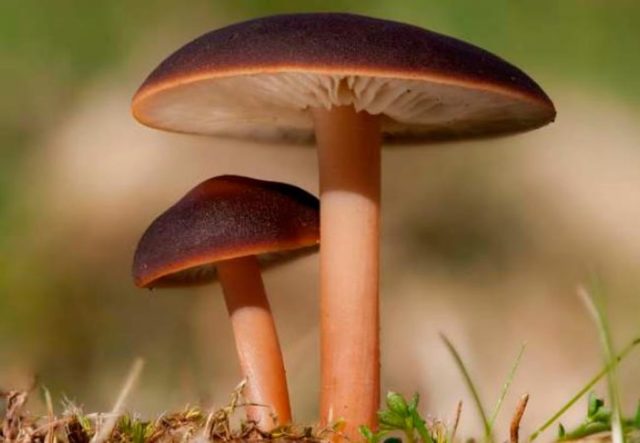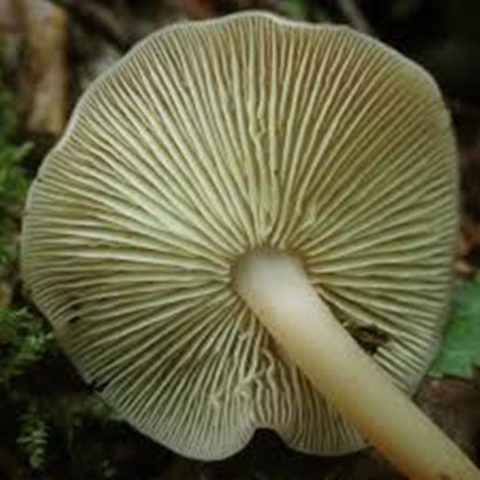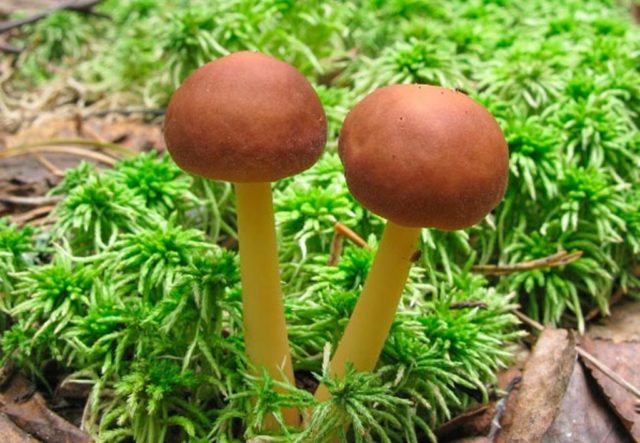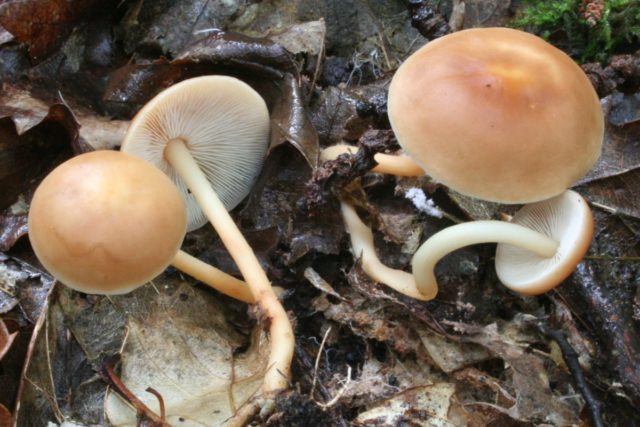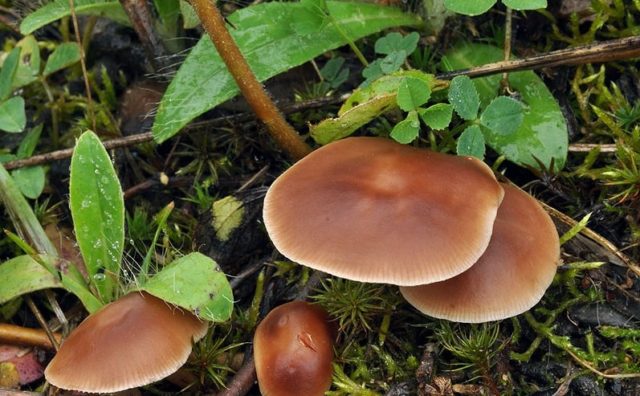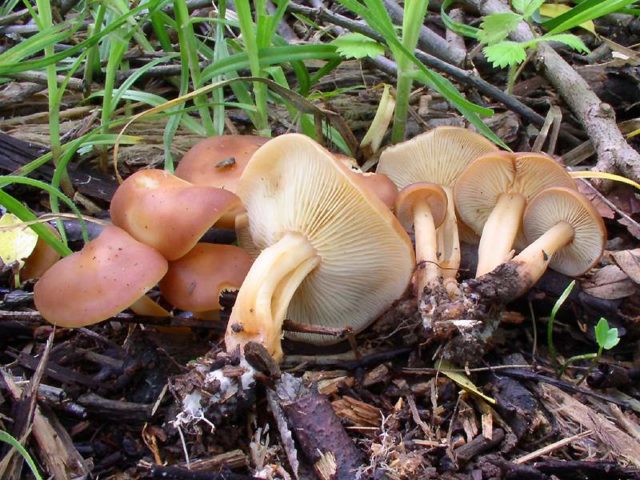Content
Colibia yellow-lamellar is an edible variety of the mushroom kingdom. But very often mushroom pickers ignore this species, implying a poisonous variety by it. During mushroom hunting, in order not to accidentally collect false doubles, it is necessary to study the characteristic features of the variety and view the photo.
What does yellow-lamellar colibia look like?
In order not to collect poisonous specimens and thereby protect yourself and your loved ones, you need to know what the yellow-plate Gymnopus looks like. Knowing the varietal characteristics, place and time of growth, you can return home with a basket full of delicious mushroom harvest.
Description of the hat
The hat of this variety is small, up to 60 mm in diameter. In young specimens, it has a convex shape, and with age it becomes flat-spread with wavy edges. The matte skin is dark red or burgundy with a thin pale stripe along the edge.
The surface is smooth, covered with mucus after rain. The hat quickly absorbs moisture, so in rainy weather it swells and takes on a dark color.
On the lower part there are numerous adherent or loose snow-white plates, which acquire a cream or dark yellow color with age.
Leg description
The leg of the yellow-lamellar Hypnopus is small, reaching a height of 8 cm, and a thickness of 5 mm. The shape is curved, cylindrical, occasionally expanding towards the bottom. The surface is smooth, light brown or pale yellow.
Is the mushroom edible or not
Collibia yellow-lamellar is an edible species. Despite the lack of aroma and pronounced aftertaste, this species in fried, stewed and canned form does not differ in taste from its noble counterparts.
Where and how it grows
Collibia yellow-lamellar grows singly and in small groups in coniferous and deciduous forests, in shaded areas with fallen leaves, needles, and wood dust. Fruiting occurs from May to October.
Doubles and their differences
This forest dweller has edible and conditionally edible cousins.
Collybia water-loving Is not a poisonous mushroom, which can be recognized by the following characteristics:
- light color;
- cylindrical shape of the leg;
- the lower part is surrounded by dark yellow and pink mushroom threads.
Hymnopus oak-loving - a similar species, which differs from its counterpart in a lighter color. The pulp is dense, without a pronounced forest aroma, but fried, stewed and canned, the mushroom reveals an unforgettable taste.
Collybia alpine - an edible mushroom, very similar to its counterpart, in color and structure of the leg. They can only be recognized through a microscope, since this species has colorless and larger spores.
Kollybia les-loving - in the conditionally edible species, the color of the cap is lighter, and there is no pale strip along the edge. Since the wood-loving hypnopus belongs to the 3rd group of edibility, the crop must be thoroughly washed before cooking, soaked for several hours and boiled.
Conclusion
Colibia yellow-lamellar is an edible mushroom that can be found in coniferous and deciduous forests. This species does not have false twins, so it is impossible to make a mistake when collecting. Despite the lack of aroma, and the characteristic mushroom flavor, the harvested crop is suitable for frying, stewing and making preserves for the winter.
